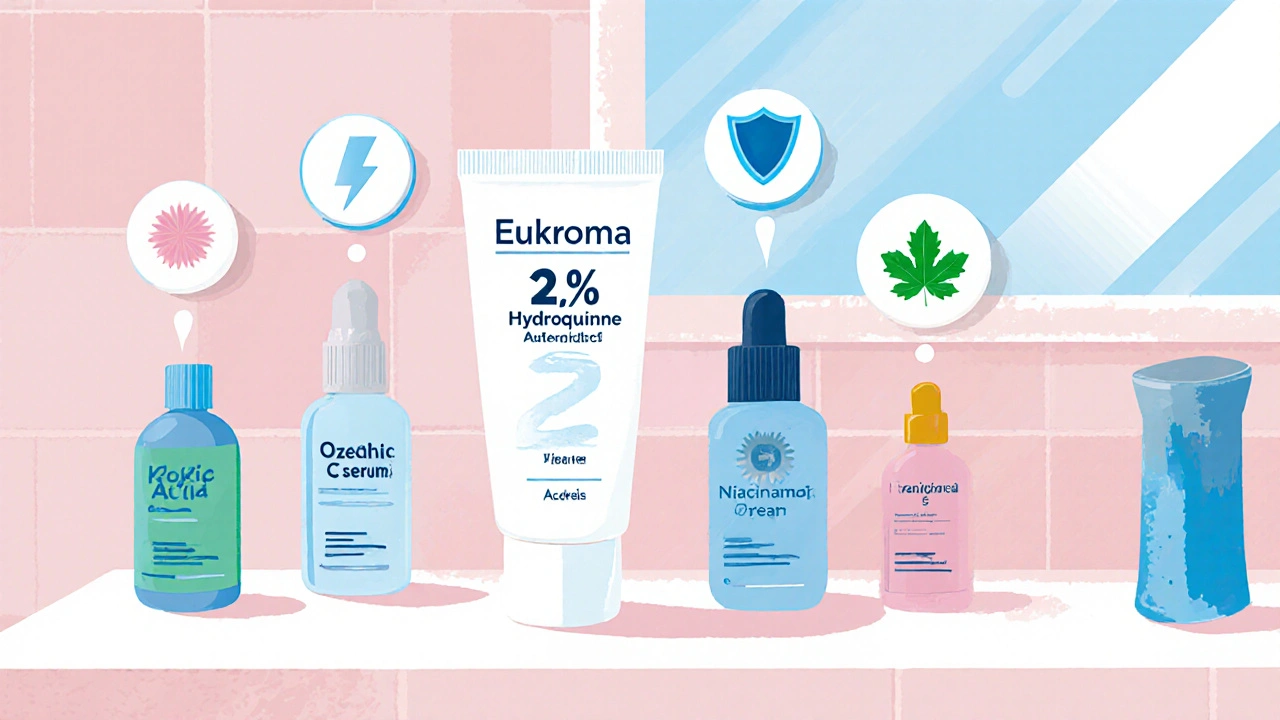Hydroquinone: Uses, Risks, and Alternatives
When working with hydroquinone, a skin‑lightening compound that inhibits melanin synthesis. Also known as HQ, it’s a staple in many dermatology offices and over‑the‑counter creams aimed at fading dark spots. Because it directly targets the enzyme tyrosinase, hydroquinone can dramatically reduce the appearance of melasma, post‑inflammatory hyperpigmentation, and age spots, often within a few weeks of consistent use. The downside? Prolonged exposure may cause irritation, ochronosis (a brownish discoloration), and, in rare cases, sensitization. That’s why doctors stress short‑term regimens and proper skin testing before committing to a daily routine.
Key Considerations When Using Hydroquinone
One of the most common conditions that pushes people toward hydroquinone is melasma, a chronic, hormone‑linked hyperpigmentation that typically appears on the cheeks, forehead, and upper lip. While melasma often responds well to a hydroquinone‑based formula, it rarely clears up on its own, and many patients combine it with sunscreen, retinoids, or other brightening agents to keep results stable. If you’re looking for a gentler option, azelaic acid, a naturally occurring dicarboxylic acid that slows melanin production and has anti‑inflammatory properties, offers a milder alternative with fewer side effects. For those who prefer an antioxidant boost, vitamin C, a potent free‑radical scavenger that brightens skin and supports collagen synthesis, can be layered under or after hydroquinone to enhance the lightening effect while protecting the skin barrier.
Understanding how these entities interact helps you build a safe, effective routine. Hydroquinone works best when paired with broad‑spectrum sunscreen because UV exposure can reverse its melanin‑blocking action and increase the risk of irritation. Azelaic acid, on the other hand, is well‑tolerated even on sensitive skin, making it a good starter for newcomers who are wary of hydroquinone’s potency. Vitamin C’s acidic nature can occasionally cause mild tingling, but when used in a stable formulation it complements hydroquinone by stabilizing free radicals generated during the lightening process. Together, these agents form a three‑part strategy: hydroquinone for rapid pigment reduction, azelaic acid for maintenance and tolerance, and vitamin C for antioxidant protection and overall skin health.
Regulatory guidelines also shape how you should approach hydroquinone. In the U.S., concentrations above 2% require a prescription, while many countries cap over‑the‑counter products at 1% or ban them outright. This reflects the balance regulators try to strike between efficacy and safety. If you’re buying a product online or at a pharmacy, double‑check the concentration and look for reputable brands that provide clear usage instructions. Short‑term courses—typically 4 to 8 weeks—followed by a break can minimize the risk of ochronosis and keep the skin’s barrier intact. During the break, switching to azelaic acid or vitamin C helps maintain the lighter tone without the harshness of continuous hydroquinone exposure.
Finally, consider the broader context of cosmetic skin care. Many users combine hydroquinone with other topical agents like retinoids, glycolic acid, or niacinamide to address texture, acne, or uneven tone alongside pigmentation. Each addition introduces its own set of interactions: retinoids can increase hydroquinone absorption, boosting results but also irritation; glycolic acid may exfoliate the skin, allowing hydroquinone to penetrate deeper. To avoid over‑loading the skin, introduce one new product at a time and monitor for any adverse reactions. This stepwise approach ensures you reap the benefits of each component while keeping the skin calm and responsive.
Below you’ll find a curated selection of articles that walk through hydroquinone’s mechanism, compare it with alternatives like azelaic acid and vitamin C, and offer practical tips for safe use. Whether you’re new to skin‑lightening treatments or looking to fine‑tune an existing routine, the guides below provide the details you need to make informed choices and achieve consistent results.
Eukroma Hydroquinone Cream vs Top Skin‑Lightening Alternatives: Pros, Cons & Best Choice
A clear, side‑by‑side comparison of Eukroma Hydroquinone Cream with popular skin‑lightening alternatives, covering how they work, pros, cons, costs, and who should use each.
Read more
